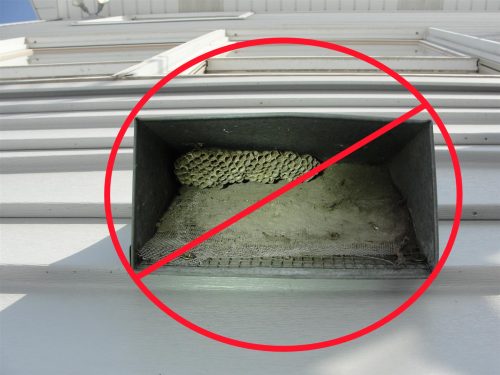Last week I wrote about what combustion air ducts are and why houses need them. This week I will follow up with some of the most common problems and solutions related to combustion air duct installation and maintenance.
By far, the most common problem that occurs with combustion air ducts is that they get blocked. When a combustion air duct is blocked, air needs to “leak” into the house through many different undesirable pathways. I’ve done a number of home inspections where the windows were completely iced shut throughout the house, and in every case, there was a blocked combustion air duct.
Problem: Intentional, ignorant blockage
A combustion air duct brings in fresh outdoor air, which usually means cold outdoor air in Minnesota. This can create a cold floor where the duct terminates and a cold draft. Check out the two images below for a nice visual of how the combustion air duct makes my basement floor cold.

To prevent this cold air from dumping into their home, people sometimes stuff clothes or towels into the combustion air duct or block the intake at the home’s exterior.


Solution: Remove any obstructions. If you want to help cut down on the amount of cold air that dumps down into the basement, try creating a trap at the bottom of the combustion air duct. Make the air have to rise up again before entering the home. I don’t have any hardcore proof that this makes a big difference, but I’ve convinced myself that it helps, and it’s easy enough to do. The two most common ways of creating a trap are to either make a “J” at the bottom of the duct or put a bucket or box underneath the duct. With either of these methods, the air must rise up before entering the home.


Just make sure that the bucket or box you use isn’t so small that it restricts airflow. I’ve always just eyeballed this, but if you’re super anal, you could make your sixth-grade math pay off by measuring the inside diameter of the bucket and the outside diameter of the duct, then calculate the surface areas (πr²) and make sure the bucket has at least twice as much as the duct.


Also, make sure the duct isn’t so long that the opening sits flat on the floor, effectively blocking it.
Problem: Lack of maintenance
The opening at the exterior for the combustion air duct will bring air into the home, and with that comes dust, dirt, insects, leaves, etc. The closer the combustion air duct is to the ground, the more likely it’ll get blocked with debris.

Solution: take a peek underneath your combustion air duct every year to make sure it stays clean. If you do this during the summer or fall, watch out for wasps. They love to make nests in this opening. If the opening is dirty, vacuum it off with a wet/dry vac. If you have an air exchanger, check the intake at the same time. The intakes are usually right next to each other, and they’re typically indistinguishable.
Problem: Small Mesh at the Exterior
The opening at the exterior of the home needs to be covered with a steel mesh having openings not less than 1/4″. When insect screen is used here, it will get dirty very quickly. Click on the photo below for a larger view; you’ll see the opening is actually covered with an insect screen, which should be removed.

Solution: Remove any restrictive mesh or material, and replace it with 1/4″ hardware cloth or something similar if it’s not already present.
Problem: Unintentional, ignorant blockage
Every so often, vinyl siding installers will forget which opening was meant for the combustion air intake, and they’ll install a damper at this opening instead of a screen. These dampers allow air out, not in.

Solution: Replace the exterior terminal with a type designed for a combustion air intake, or remove the damper and cover the opening with 1/4″ hardware cloth.
Problem: Inlet installed too close to the ground
The inlet for a combustion air duct needs to be installed at least 12″ above grade. When it’s too close to the ground, it can get dirty quickly and get blocked over with snow.


Solution: When the combustion air inlet is installed this close to the ground, it’s usually done because that’s where the rim joist was located, so making a higher hole in the side of the house isn’t an option. The solution is to install a snorkel. I think the photo below is pretty self-explanatory. Unfortunately, I don’t know where to purchase one of these contraptions. The HVAC contractors I’ve talked to said they make their own.

That concludes my list of the most common installation and maintenance defects with combustion air ducts.
Related Posts:
- Combustion Air Ducts, Part I: Why Houses Need Them
- Combustion Air Duct Connected to the Return Plenum
Quick links in this post: Blocked duct at interior, dirty intake at exterior, small mesh at exterior, blocked intake at exterior, intake installed too low, cut down on cold air coming in.

